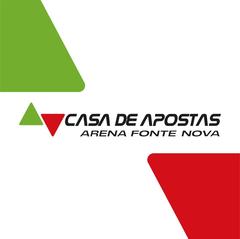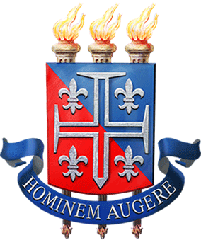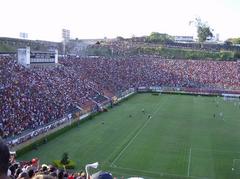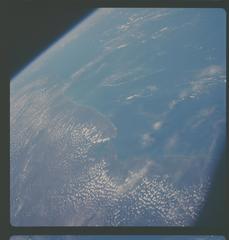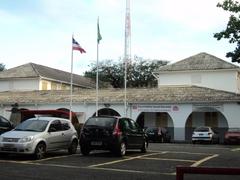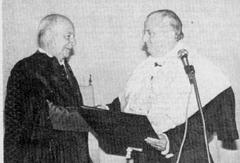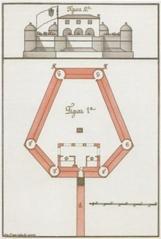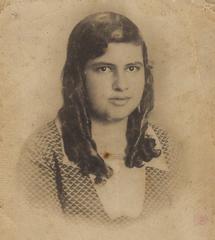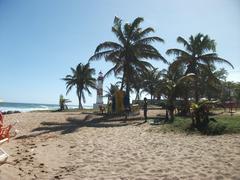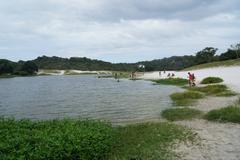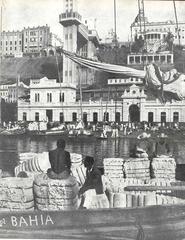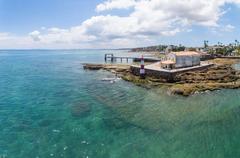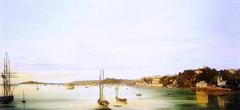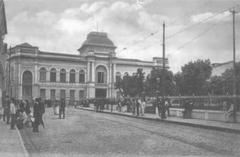
Praça da Sé Salvador: Visiting Hours, Tickets, and Complete Visitor Guide
Date: 04/07/2025
Introduction
Praça da Sé, at the heart of Salvador’s historic center, is a vibrant public square where centuries of Brazilian history, Afro-Brazilian culture, and colonial architecture converge. Once the site of Brazil’s first Catholic cathedral, the square now stands as a testament to Salvador’s evolving identity, blending poignant memorials with lively street life and proximity to many of Salvador’s top attractions (salvadordabahia.com). This guide provides detailed, up-to-date information on Praça da Sé’s history, cultural significance, visiting hours, tickets, accessibility, nearby sites, and practical travel tips to ensure a rewarding visit.
Table of Contents
- History & Significance
- Main Landmarks & Monuments
- Cultural Life & Events
- Visitor Information
- Nearby Attractions
- Photography & Best Times to Visit
- FAQ
- Conclusion & Resources
History & Significance
Origins and the Demolition of the Sé Cathedral
Praça da Sé stands on the historic site of the Sé Primacial, Brazil’s first Catholic cathedral, constructed in 1552 to symbolize Portuguese colonial and religious authority in Salvador (salvadordabahia.com). The cathedral was a formidable landmark, central to the city’s religious and civic life for nearly four centuries. In 1933, as part of urban modernization and the expansion of the streetcar system, the original cathedral was controversially demolished. This dramatic act sparked debates over heritage preservation, and the area was transformed into the present Praça da Sé, representing both a sense of loss and the city’s capacity for renewal (Salvador Turismo).
Cultural Continuity and Transformation
Despite the loss of the cathedral, Praça da Sé retains its spiritual and cultural importance. Today, the square is framed by colonial and modern architecture, including the Baroque Palácio Arquiepiscopal and the Cathedral Basilica of Salvador. It is a focal point for religious festivals, Afro-Brazilian traditions, and community gatherings, reflecting Salvador’s diverse identity (Wikipedia: Historic Center of Salvador; Thrillophilia).
Main Landmarks & Monuments
Fallen Cross Monument (Cruz Caída)
A defining feature of Praça da Sé is the Cruz Caída, or Fallen Cross Monument. Designed by Mário Cravo Júnior and inaugurated in 1999, this modernist sculpture marks the site of the demolished cathedral. With its stark, geometric lines, the monument is a powerful symbol of both historical memory and Salvador’s forward-looking spirit. It is a popular spot for photography and quiet reflection (salvadordabahia.com).
Archbishop’s Palace & Cultural Center
Built between 1707 and 1715, the Palácio Arquiepiscopal (Archbishop’s Palace) is one of Brazil’s finest examples of colonial civil architecture, featuring a Baroque façade and Portuguese marble décor (Wikipedia: Archbishop’s Palace of Salvador). The restored palace now houses the Centro Cultural Palácio da Sé, which offers:
- Guided tours of its elegant halls and rare historical exhibits.
- The permanent exhibition “A Igreja e a formação do Brasil,” with over 16,000 documents.
- Panoramic views of the Bay of All Saints from its windows.
Visiting Hours: Tuesday to Sunday, 10:00–17:00.
Tickets: Entrance is generally free; some guided tours may require a small fee (palaciodase.org.br).
Cathedral Basilica of Salvador
Overlooking Praça da Sé is the Cathedral Basilica of Salvador, a masterpiece of 17th-century Mannerist architecture. Its grand façade, Lioz stone construction, Baroque altars, and ornate azulejos make it an architectural highlight (Wikipedia: Cathedral Basilica of Salvador; Wild Trips). The cathedral remains an active center of worship and a symbol of Salvador’s enduring Catholic heritage.
Baianas do Acarajé Memorial & Zumbi dos Palmares Statue
- Baianas do Acarajé Memorial: Celebrates the women who embody Bahian culinary tradition and Afro-Brazilian identity, particularly through the iconic street food, acarajé (London and the World).
- Zumbi dos Palmares Statue: Honors the leader of Brazil’s largest slave rebellion and stands as an emblem of Black resistance and cultural pride (Vivi Travels).
Cultural Life & Events
Praça da Sé is a lively public space, animated by musicians, street performers, capoeira demonstrations, and vendors selling traditional foods and crafts (Thrillophilia). The square often hosts open-air concerts, festivals, political gatherings, and religious processions. Major events include:
- Carnival celebrations, with music and parades (Vivi Travels).
- Cultural exhibitions at the Centro Cultural Palácio da Sé.
- Religious festivals and Afro-Brazilian rituals, reflecting Salvador’s spiritual diversity.
Visitor Information
Hours & Admission
- Praça da Sé (Square): Open 24 hours daily; best visited during daylight.
- Centro Cultural Palácio da Sé: Tuesday–Sunday, 10:00–17:00; closed Mondays (palaciodase.org.br).
- Cathedral Basilica: Typically open Monday–Saturday, 9:00–17:00; Sunday, 8:00–12:00 (Wikipedia: Cathedral Basilica of Salvador).
- Museu Afro-Brasileiro & Museu de Arqueologia e Etnologia: Tuesday–Sunday, 10:00–17:00 (Lonely Planet).
Admission:
- The square is free to enter.
- Most museums and the cultural center charge modest fees.
- Guided tours may have additional costs.
Guided Tours
Guided walking tours—focused on history, architecture, or culture—are available through the Centro Cultural Palácio da Sé and local operators. Booking ahead is recommended, especially during peak seasons (Wild Trips).
Accessibility
- The square and cultural center are wheelchair accessible, with paved surfaces and ramps.
- Some historic buildings may have limited access; check ahead for specific needs (Lonely Planet).
- Public transport and ride-hailing services are the best ways to reach the square due to limited parking.
Safety & Travel Tips
- Visit during daylight, avoid isolated areas at night, and secure valuables (gotraveltipster.com).
- Be aware of pickpockets during crowded festivals or events.
- Dress modestly when entering religious sites.
- Learn basic Portuguese phrases for a smoother experience.
Nearby Attractions
- Pelourinho: UNESCO World Heritage district, famed for colorful colonial buildings and music.
- São Francisco Church & Convent: Lavish Baroque interiors and historic azulejos.
- Elevador Lacerda: Iconic urban elevator with bay views (Live More Travel More).
- Mercado Modelo: Bustling craft market for souvenirs (Vivi Travels).
- Museu Afro-Brasileiro: Insight into Afro-Brazilian heritage and the transatlantic slave trade (Lonely Planet).
- Casa do Olodum: Center for Afro-Brazilian music and culture.
Photography & Best Times to Visit
- Best light for photos: early morning and late afternoon.
- For fewer crowds, visit on weekday mornings.
- The square’s monuments, colorful street scenes, and panoramic bay views offer excellent photo opportunities.
FAQ
Q: What are visiting hours for Praça da Sé and its main attractions?
A: The square is open 24/7; the Centro Cultural Palácio da Sé is open Tuesday–Sunday, 10:00–17:00. The cathedral and museums have similar hours.
Q: Are there entrance fees?
A: The square is free. Museums and the cultural center usually charge a small fee or are free with optional paid guided tours.
Q: Is Praça da Sé accessible?
A: Yes, though some historic buildings may have limited access.
Q: Is it safe to visit Praça da Sé?
A: It is generally safe by day; exercise caution at night, especially in less crowded areas.
Q: How do I get there?
A: Use public transport or ride-hailing services. The square is within walking distance of many major sites.
Conclusion & Resources
Praça da Sé stands as a living crossroads of Salvador’s history, from the legacy of its lost cathedral to today’s vibrant cultural scene. The square’s monuments, museums, and surrounding landmarks offer a deep dive into Brazil’s colonial, Afro-Brazilian, and contemporary heritage. With free public access, engaging guided tours, and close proximity to other must-see sites, Praça da Sé is an essential stop in Salvador.
To plan your visit and receive real-time updates on events, tours, and exhibitions, download the Audiala app. For official information, visit the Centro Cultural Palácio da Sé’s website or the Salvador da Bahia tourism portal.
Further Reading & Sources:
- Praça da Sé Salvador: Visiting Hours, Tickets, and Historical Sites Guide (salvadordabahia.com)
- Archbishop’s Palace of Salvador (Wikipedia)
- Historic Center of Salvador (Wikipedia)
- Cathedral Basilica of Salvador (Wikipedia)
- Praca da Se (Thrillophilia)
- Praça da Sé (Lonely Planet)
- Palácio da Sé Cultural Center (palaciodase.org.br)
- Salvador Attractions (Wild Trips)
- Salvador de Bahia (London and the World)
- Salvador Guide (Vivi Travels)
- How Safe is Salvador for Tourists (gotraveltipster.com)


